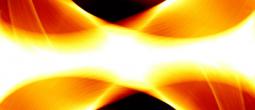

Reactor Chamber Simulation

The reactor chamber simulates the transfer of thermal energy from the reaction to the Reaction Isolation Shield (RIS) that lines the reactor wall. This thermal energy is picked up by the primary coolant system for generation purposes.
The simulator has three main functions, which calculates how much thermal energy radiates from the reaction and how much of that energy reaches the reaction chamber wall (where it can be transferred by the primary coolant system for generation purposes).
Emitted Thermal Radiation (ETR)
The size of the reaction area and its temperature are key factors in thermal energy emission from the reaction.
 Plasma Temperature
Plasma Temperature
The higher the plasma temperature, the more energy is emitted from the reaction. The conversion from thermal energy within the reaction to radiated energy
Surface Area
Surface area represents how much thermal energy can be radiated (emitted) at once. A larger surface area allows emission of more thermal energy over a given time, at the expense of dissipating plasma temperature over the larger surface area. For example, a small but intensely hot reaction area will emit less thermal energy than a larger, cooler reaction area.
Function
The amount of thermal energy emitted by the reaction is expressed by the function:
Where x is the plasma temperature, a is the surface area of the ERV (see below), e is the emissivity of the plasma and s is the Stefan-Boltzmann Constant.
The ETR is measured in Megawatts per square meter (MWm2)

ERV Surface Area
The surface area of the Effective Reaction Volume (ERV) is calculated using the function:
Where R is the major radius (which describes the reaction’s origin) which is a constant of 3.5 (metres), and r is the minor radius (or radius of the ERV) which is the AFPF at meridien. The division by eight provides the surface area for each of the eight segments.
Thermal Radiation Transmission (TRT)
How much of the thermal energy radiated by the reaction that is transmitted to its target (the Reaction Isolation Shield (RIS)) is determined by distance between the reaction’s surface area (represented by the AFPF) and the RIS. Energy transmission attenuates over distance.
A larger reaction (or larger ERV) would place the reaction’s surface (AFPF) closer to the RIS, reducing the distance over which thermal transmission is required.
The thermal energy received is further attenuated due to being distributed over the surface area of the RIS.
Function
Where E is the ETR, d is the distance from the surface of the ERV to the RIS (calculated by subtracting the ERV radius from the reaction chamber radius (1.8m)) and c is a constant (1.98).
Environmental Thermal Transmission (ETT)
Environmental Thermal Transmission simulates the escape of thermal energy from the reactor chamber into the vessels operating environment. It is expressed in MWm2
Function
where t is the TRT, a is the Thermal Attenuation Factor (TAT) and f is the material attenuation factor, a constant (0.03) describing the attenuation of thermal energy as it is transmitted through the material making up the reactor chamber’s outer wall.
Thermal Attenuation Factor (TAT)
The RIS (Thermal Module) has a Thermal Attenuation Factor (which gradually declines as the module erodes with use). This is expressed as a percentage of thermal energy captured (nominal is 97%). This means that 3% of the TRT is uncaptured.
Environmental Heat Load (EHL)
Environmental Heat Load simulates the environmental impact of thermal energy escaping the reaction chamber (ETT). This has an impact on the operating temperature of the surrounding Toroidal Field Generators.
It is expressed in degrees centigrade.
Function
Where S is the outer surface area of the segment, e is the ETT, m is a modifer (1000) and w is the Watt to degree centigrade conversion factor (0.03159).
Outer Surface Area
Where R is the reaction chamber’s external radius (5.6M) and r is the outer torus radius (2.1 meters). As the surface area of the recator chamber is a physical construct, in practise this is a constant (58.03327388M2).








